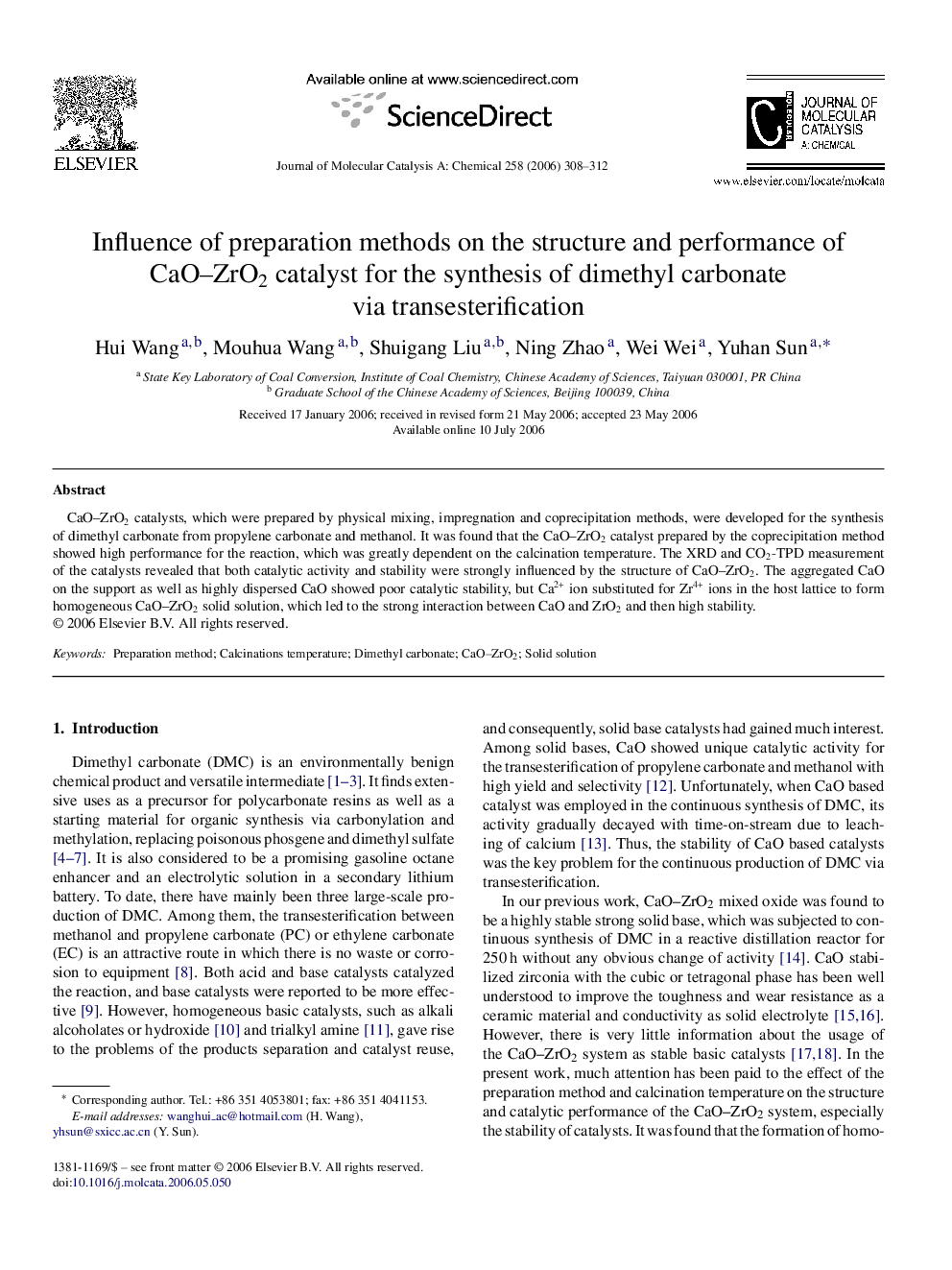| Article ID | Journal | Published Year | Pages | File Type |
|---|---|---|---|---|
| 68900 | Journal of Molecular Catalysis A: Chemical | 2006 | 5 Pages |
CaO–ZrO2 catalysts, which were prepared by physical mixing, impregnation and coprecipitation methods, were developed for the synthesis of dimethyl carbonate from propylene carbonate and methanol. It was found that the CaO–ZrO2 catalyst prepared by the coprecipitation method showed high performance for the reaction, which was greatly dependent on the calcination temperature. The XRD and CO2-TPD measurement of the catalysts revealed that both catalytic activity and stability were strongly influenced by the structure of CaO–ZrO2. The aggregated CaO on the support as well as highly dispersed CaO showed poor catalytic stability, but Ca2+ ion substituted for Zr4+ ions in the host lattice to form homogeneous CaO–ZrO2 solid solution, which led to the strong interaction between CaO and ZrO2 and then high stability.
Graphical abstractThe activity and stability of CaO–ZrO2 catalysts for the synthesis of dimethyl carbonate via transesterification (Scheme 1) was greatly influenced by the preparation method and calcination temperature. It was found that the homogeneous CaO–ZrO2 solid solution exhibited both excellent activity and stability because of the strong interaction between active sites and support. Figure optionsDownload full-size imageDownload as PowerPoint slide
